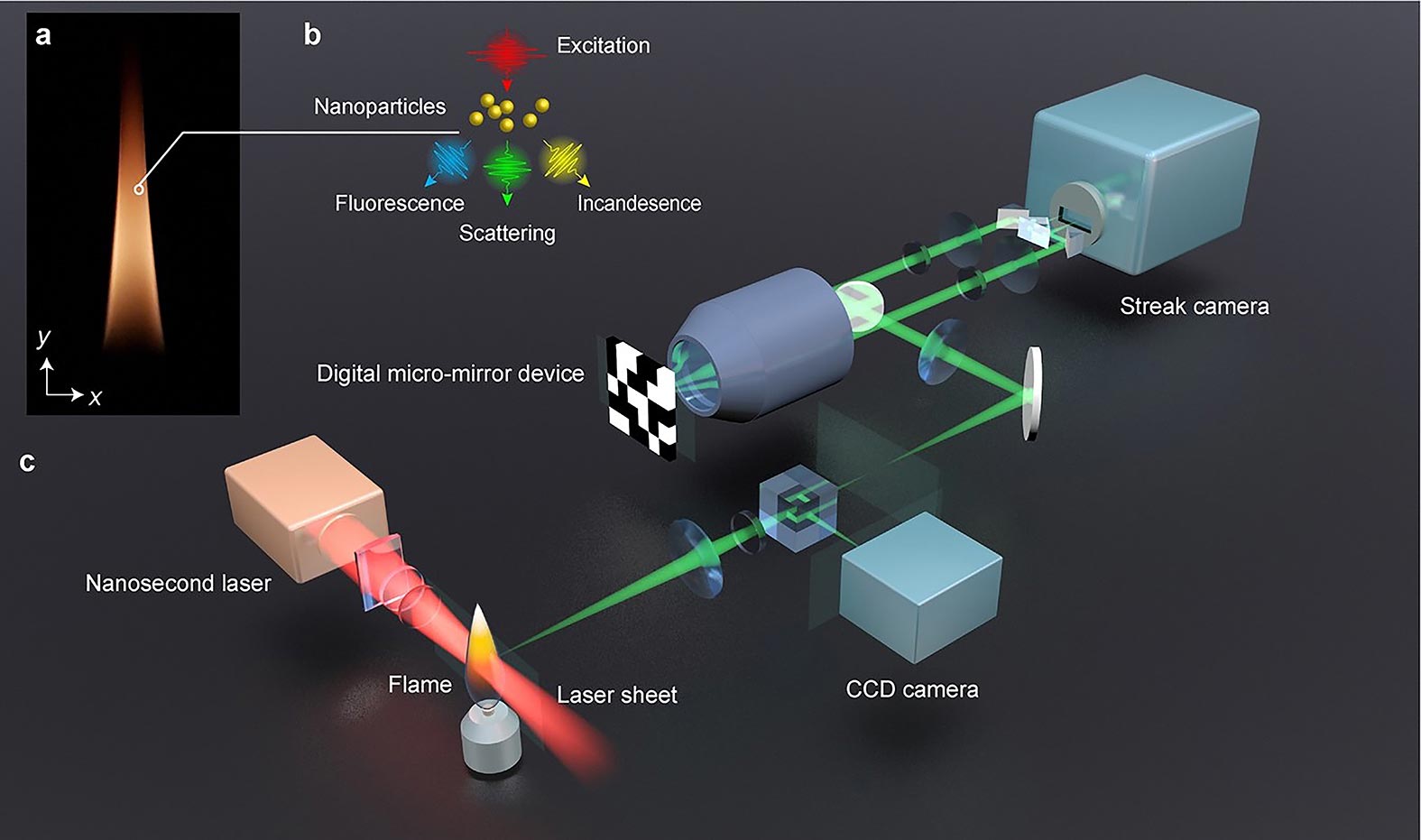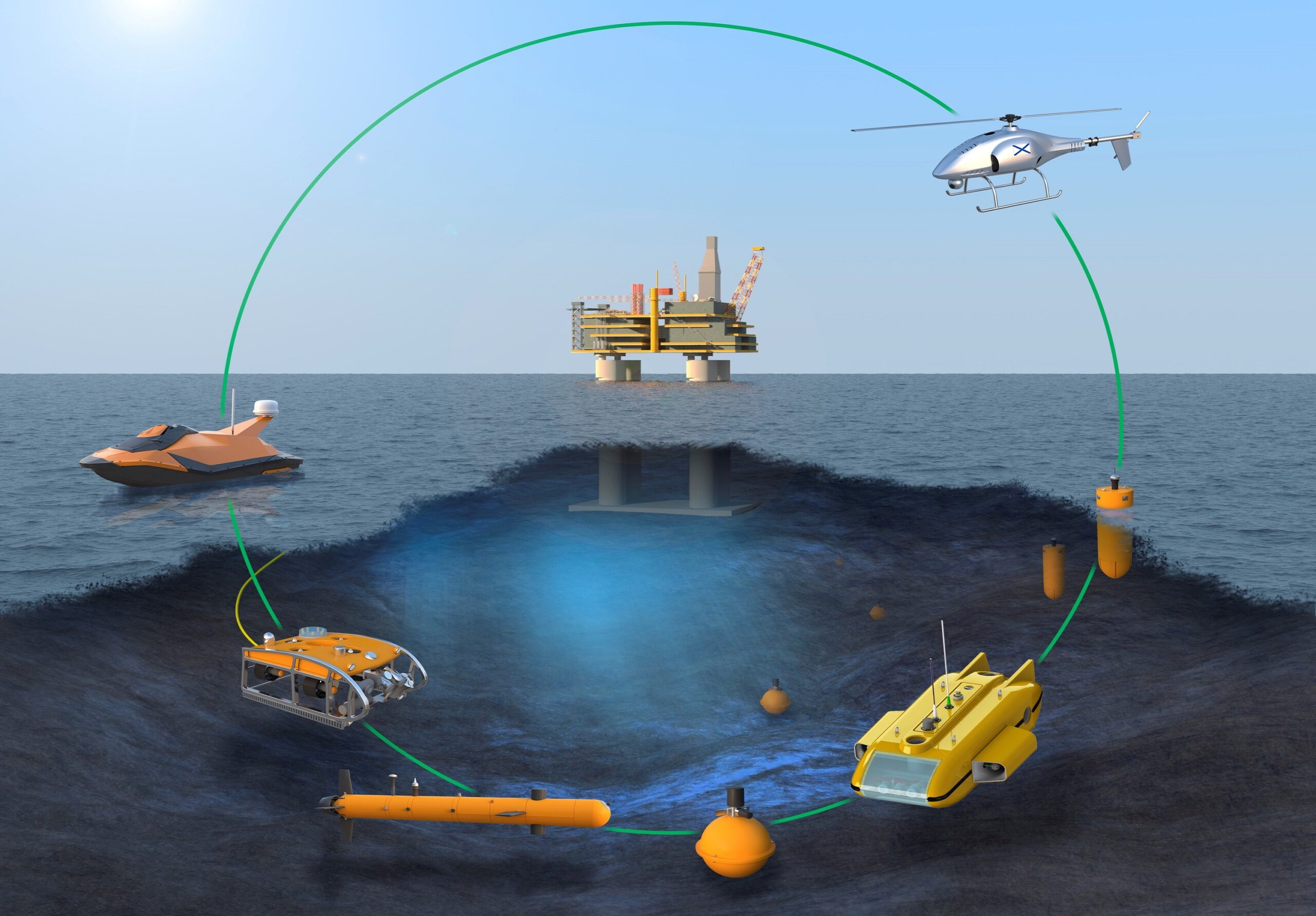
Representation of the ultrafast LS-CUP laser digital camera that captures what occurs throughout combustion. Credit score: Yogeshwar Nath Mishra and Peng Wang
By means of illuminating a pattern floor with quick laser beam pulses, it’s conceivable to movie sequences of more than a few chemical and bodily reactions. A analysis group that integrated researchers from the College of Gothenburg has now evolved the sector’s quickest single-shot laser digital camera, which is a minimum of one thousand instances quicker than nowadays’s most present apparatus for combustion diagnostics. The invention has huge importance for finding out the lightning-fast combustion of hydrocarbons.
What occurs to a subject matter this is burned in numerous prerequisites? To analyze this query, researchers use a laser digital camera that images the fabric in a two-dimensional layer, referred to as LS CUP (single-shot laser sheet compressed ultrafast pictures). By means of looking at the pattern from the facet, it’s conceivable to look what reactions and emissions happen through the years and area. Researchers have used LS-CUP to check the combustion of more than a few hydrocarbons.
12.5 billion pictures in keeping with moment
Contents
Physicists from the College of Gothenburg, at the side of colleagues in america and Germany, have evolved an ultrafast laser digital camera that may create movies with a record-fast pace of 12.5 billion pictures in keeping with moment, which is a minimum of one thousand instances quicker than nowadays’s best possible laser apparatus. This has enabled researchers for example combustion with a time solution that hasn’t ever been completed earlier than.
“The extra footage taken, the extra exactly we will be able to apply the process occasions. Hydrocarbon gas combustion produces nano-sized soot debris, more than a few mild phenomena and polycyclic fragrant hydrocarbons, PAH, which might be hazardous to the surroundings,” says Yogeshwar Nath Mishra, who used to be one of the most researchers on the College of Gothenburg and who’s now presenting the ends up in a systematic article within the magazine Gentle: Science & Programs.
Quick-lived soot debris
Soot debris from hydrocarbons represent 70% of the fabric in interstellar area and also are fascinating nanomaterial with programs in electronics and effort. Soot debris and fragrant hydrocarbons are extraordinarily short-lived, with a lifespan measured in nanoseconds after they expend. Combustion is characterised by means of extraordinarily instant reactions that don’t seem to be repeated. Finding out combustion calls for ultrafast the way to seize pictures, which researchers have now completed with this new laser digital camera.
“Earlier than, issues arose when the digital camera used to be restricted to a couple of million pictures in keeping with moment. Generating two-dimensional footage of various kinds of combustion has required repeated laser pulses, which affects the combustion temperature when the laser provides power,” says Yogeshwar Nath Mishra.
Software in lots of analysis fields
The brand new laser digital camera takes a singular image with a unmarried laser pulse. The picture pace is as much as 10 billion footage in keeping with moment and will simply be tailored to look at all varieties of laser-induced alerts all through the particle’s lifespan. Programs prolong some distance past combustion analysis and can be utilized widely in physics, chemistry, biology and drugs, power and environmental analysis.
Reference: “Unmarried-pulse real-time billion-frames-per-second planar imaging of ultrafast nanoparticle-laser dynamics and temperature in flames” by means of Yogeshwar Nath Mishra, Peng Wang, Florian J. Bauer, Yide Zhang, Dag Hanstorp, Stefan Will and Lihong V. Wang, 21 February 2023, Gentle: Science & Programs.
DOI: 10.1038/s41377-023-01095-5
Supply By means of https://scitechdaily.com/1000x-faster-worlds-fastest-laser-camera-films-combustion-in-real-time/


